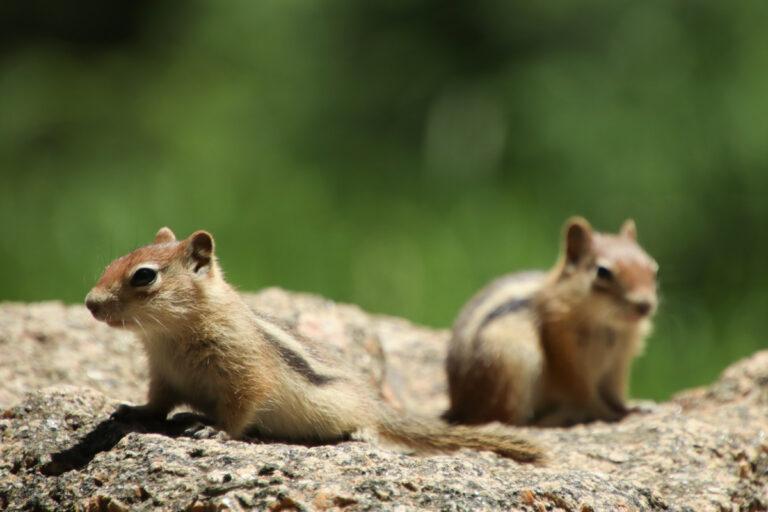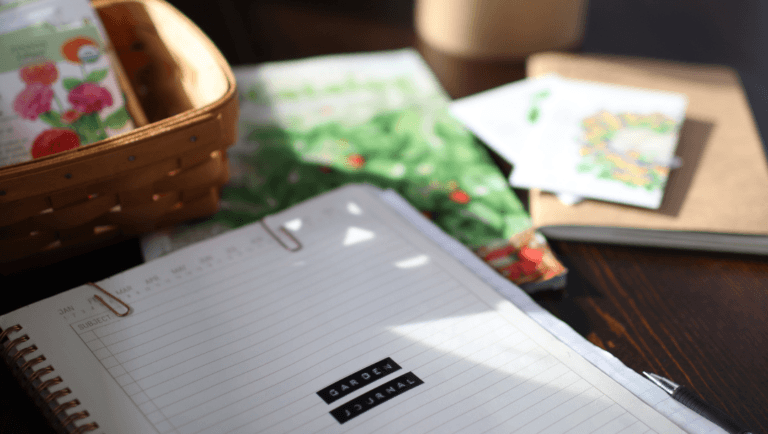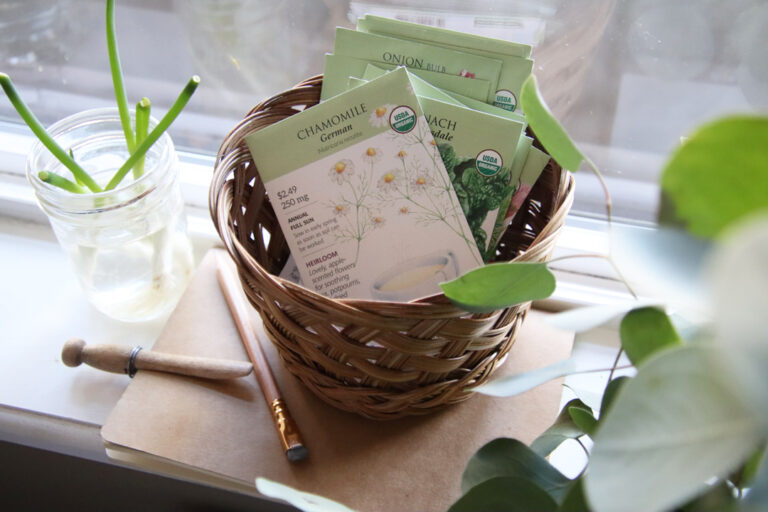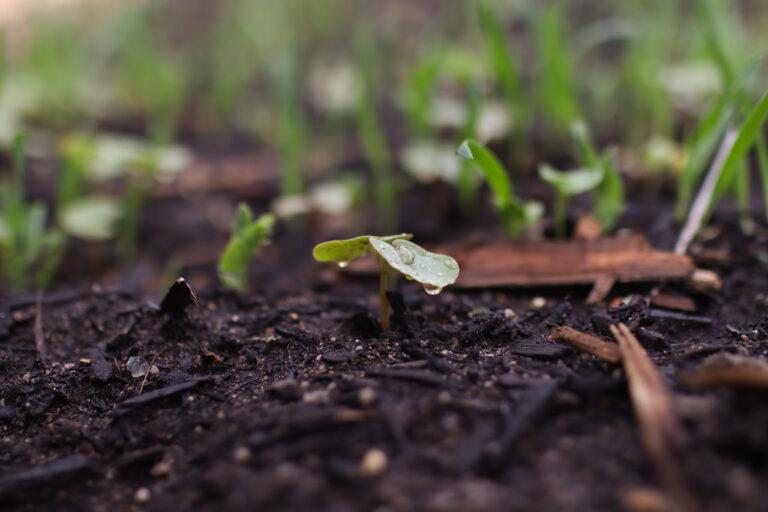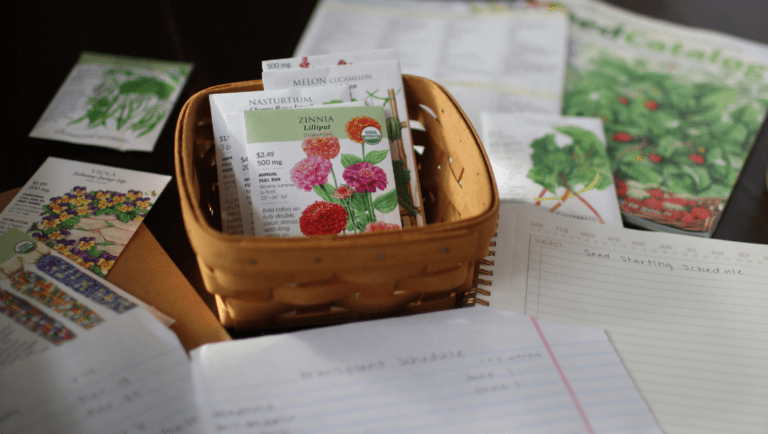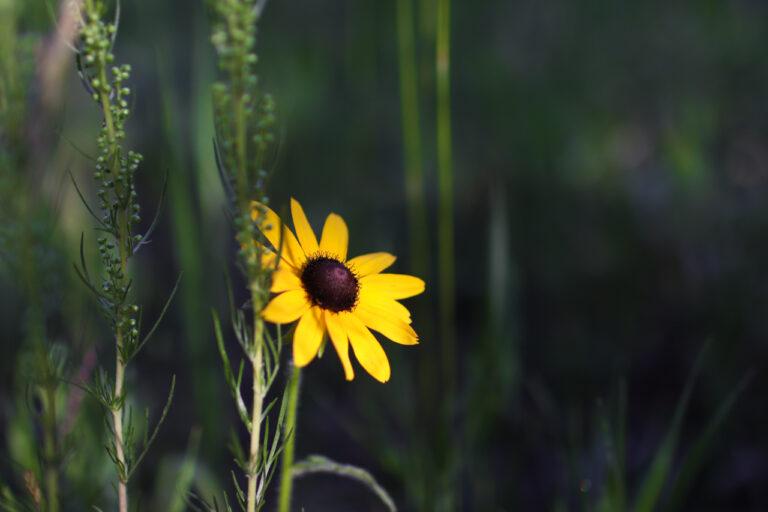15 Easy-to-Grow Flowers for Beginners
Flowers are so much fun to grow and they are beneficial to every garden! Below you’ll find the 15 best flowers for beginners to grow with some tips and highlights on each flower.
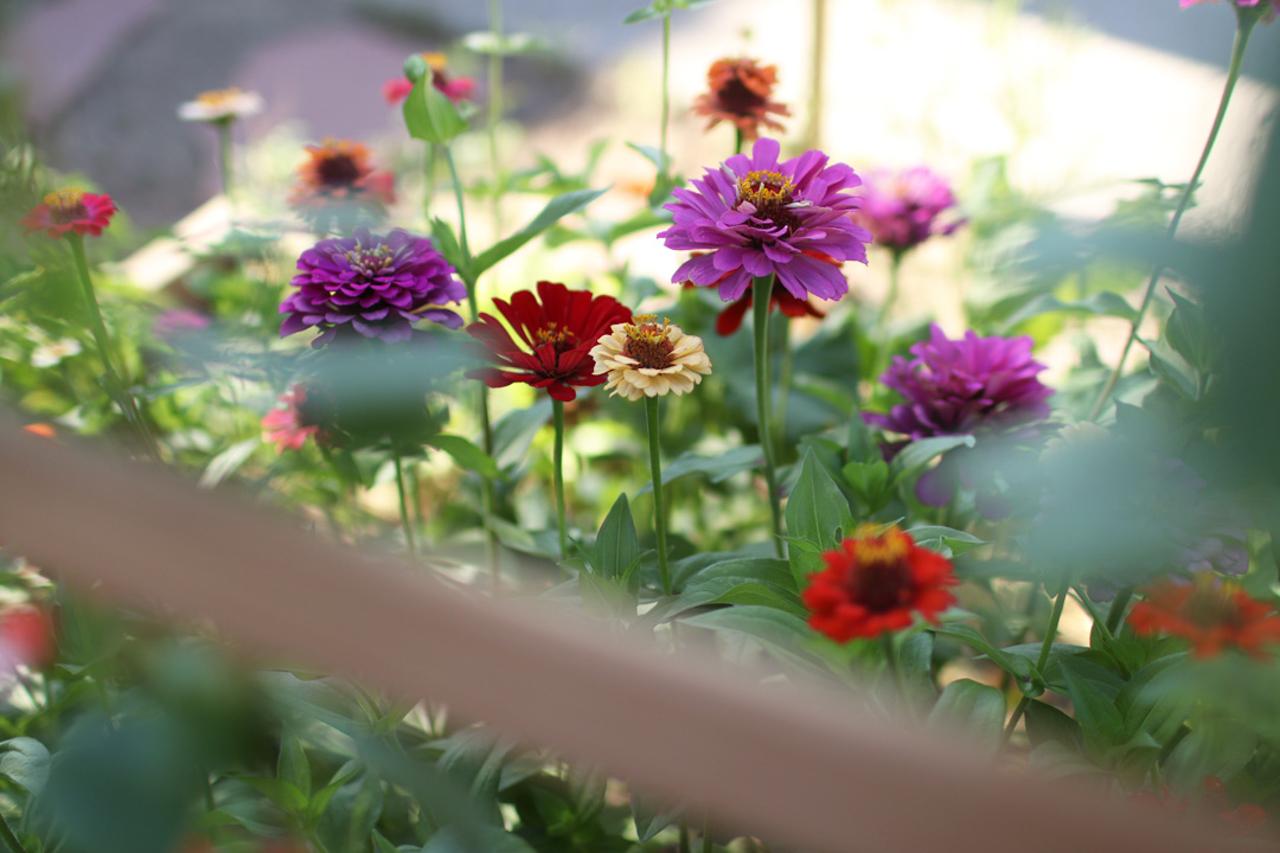
Flowers are an important and lovely part of any garden. They add visual appeal, attract pollinators, and often bring other medicinal or culinary benefits. Though you can’t (usually) eat them, flowers play an important role even in a vegetable garden. Their fragrant and colorful blooms bring in honey bees, native bees, butterflies, and other pollinators that are critical for growing many of your common vegetables.
Many flowers are incredibly easy to grow and require very little maintenance or care. Plant these 15 flowers throughout your garden for a beautiful and successful gardening season!
Want to know my tips for growing flowers? I share them at the end of this article or you can skip ahead to read them now.
This post contains affiliate links. If you make a purchase through the links, I will earn a small commission at no cost to you. As an Amazon Associate, I earn from qualifying purchases. Read my full disclosure here.

1. Marigolds
Height: 24 – 36 inches
Spread: 12 – 24 inches
Bloom Time: Summer to frost
Type of plant: Annual
Marigolds are a popular flower because of their variety of colors, simplicity to grow, and traditional use in Día de los Muertos decorations. There are small varieties that are perfect for pots or small gaps in the garden and a larger variety that is an absolute showstopper. With long-lasting blooms that the pollinators love, marigolds are sure to be a winner in your garden.
Get marigold seeds here.

2. Crimson Clover
Height: 12 – 36 inches
Spread: 8 – 12 inches
Bloom Time: Summer
Type of plant: Annual
Crimson Clover is most often grown as a cover crop, but it is a showstopper flower as well. With bright, pink/red blooms and lush, clover-shaped foliage, this flower adds immense beauty to any garden. As a clover, it will help fix nitrogen in your garden as the roots break down. Crimson clover is also an edible flower and a great herbal tea addition. Pollinators will love this flower in your garden and so will you!
Get crimson clover seeds here.

3. Pansies
Height: 6 – 8 inches
Spread: 6 inches
Bloom Time: Spring through fall with the heaviest blooming during cool weather
Type of plant: Short-lived perennial, often grown as an annual
These dainty, adorable flowers are a common favorite for the springtime, but they can also bloom all summer and fall. An edible flower with a gorgeous variety of colors, pansies should be in every kitchen garden! They take up very little growing space and will offer fun, beautiful flowers for a pop of color in the garden or on your plate.
Get pansy seeds here.

4. Zinnias
Height: 24 – 48 inches
Spread: 12 – 24 inches
Bloom Time: Summer to frost
Type of plant: Annual
Because of their gorgeous, plentiful blooms, zinnias are a popular garden annual in cut flower gardens, cottage gardens, pollinator gardens, and more. They are the perfect addition to a cut flower garden because of their long vase life which makes them an ideal choice for bouquets. You will enjoy choosing from the wide array of varieties available and seeing the butterflies drinking from the flowers all summer long.
Get zinnia seeds here.

5. Calendula
Height: 12 – 24 inches
Spread: 8 – 12 inches
Bloom Time: Spring to frost
Type of plant: Annual
Calendula is a popular flower for gardeners, and for good reason. Easy to grow and a ready self-seeder, you will have no shortage of calendula plants in your garden after your first year. Calendula also has medicinal properties and is therefore often grown for balms, salves, and tea. It produces gorgeous daisy-like flowers that will bloom from early summer until the first frost. Calendula can be planted early so it is one of the first non-perennial blooms each summer and the seeds are very easy to save.
Get calendula seeds here.

6. Black-Eyed Susans (Rudbeckia)
Height: 24 – 36 inches
Spread:12 – 24 inches
Bloom Time: Summer to frost
Type of plant: Perennial
Black-eyed susans are the perfect perennial for bringing a deep, golden pop to your fall garden. They start blooming in late summer and make the perfect addition to bouquets. A native to parts of the United States, black-eyed susans are very drought-tolerant and hardy.
Get black-eyed susan seeds here.

7. Chamomile
Height: 18 – 30 inches
Spread: 12 – 18 inches
Bloom Time: Late Spring to frost
Type of plant: Annual
Chamomile is grown for its medicinal flowers that make a delicious tea, but those flowers are also beautiful and easy to grow! With several tiny, daisy-like blooms per plant, chamomile adds a beautiful, sunny adornment to any garden. The flowers also offer a heavenly fragrance and can be harvested for tea, bouquets, and more. The more your harvest the more they grow! If some of the flowers go to seed, you will have plenty of chamomile plants grow on their own next year.
Get chamomile seeds here.

8. California Poppies
Height: 6 – 12 inches
Spread: 6 – 12 inches
Bloom Time: Spring to frost
Type of plant: Perennial, grown as an annual
Native to California and popular as their state flower, California poppies are a beautiful addition to gardens far and wide. With daily orange blooms and beautiful fern-like foliage, California poppies will liven up your garden while feeding the bees.
Get California poppy seeds here.

9. Lavender
Height: 12 – 18 inches
Spread:Up to 24 inches over a few years
Bloom Time: Summer with an occasional second bloom in fall
Type of plant: Perennial
Not only does lavender have a relaxing scent and a delicious flavor, it also adds a beautiful, whimsical look to a garden! Lavender is a perennial that provides you with blooms once or twice a summer. These flowers can be harvested and dried for tea, satchels, culinary uses, and dried floral arrangements. The foliage is just as beautiful as the flowers, so you’ll enjoy having this plant in your flower garden all season long.
Get lavender seeds here.

10. Nasturtiums
Height: 12 – 18 inches
Spread: 12 – 36 inches with trailing vines up to 5 feet long
Bloom Time: Summer to frost
Type of plant: Perennial in zones 10 and warmer, grown as an annual
Nasturtiums are one of the more unique flowers that commonly grow in gardens. With both mounding varieties and trailing varieties, naturtiums make themselves known in the garden. Their leaves may be even more beautiful than their flowers and there is no shortage of foliage on this plant. Bees love the flowers and the entire nasturitum plant is edible. Many gardeners enjoy adding the leaves and flowers to a salad for their spicy, peppery flavor and visual appeal.
Get nasturtium seeds here.

11. Yarrow
Height: 24 – 36 inches
Spread:12 – 24 inches
Bloom Time: Summer to frost
Type of plant: Perennial
Another gorgeous perennial, these flowers will fill in gaps in your garden as they spread each year and add a nice pop of texture. Yarrow is known for its medicinal properties and it is a unique addition to flower bouquets. There are many beautiful cultivars, but the traditional white yarrow is a lovely native to add to your landscape.
Get yarrow seeds here.

12. Purple Coneflower (Echinacea)
Height: 24 – 48 inches
Spread: 12 – 36 inches
Bloom Time: Summer to frost
Type of plant: Perennial
Purple coneflower is a nostalgic cottage garden flower with beautiful purple-pink blooms. As a native, drought-tolerant perennial, coneflower is an ideal plant for hands-off and active gardeners alike. The roots have medicinal properties making them a common ingredient in teas and tinctures.
Get purple coneflower seeds here.

13. Bachelor’s Buttons (Cornflower)
Height: 24 – 36 inches
Spread: 12 inches
Bloom Time: Summer
Type of plant: Annual
Bachelor’s buttons are a nostalgic, old-fashioned flower to add to an edible flower garden, cottage garden, or anywhere you’d like to attract more pollinators. With long-lasting blooms, edible petals, and a bright, blue color, these flowers are winners every year. They readily re-seed, so you likely won’t need to plant more. But if you do want to, it’s easy to save seeds so you’ll never have to buy them again.
Get bachelor’s button seeds here.

14. Columbines
Height: 12 – 24 inches
Spread: 6 – 12 inches
Bloom Time: Late spring to early summer
Type of plant: Perennial
Despite their short bloom time, columbines are a must-grow. As perennials, they come up every year with little-to-no maintenance. Columbines also produce beautiful, unique blooms that are sure to wow you. The traditional purple columbines are a native to much of North America, making them a great plant to support insects and wildlife and grow a drought-tolerant, water-wise garden.
Get columbine seeds here.

15. Snapdragons
Height: 6 – 8 inces
Spread: 3 – 4 inches
Bloom Time: Spring through fall, but bloom the best in cooler weather
Type of plant: Short-lived perennial, often grown as an annual
Snapdragons are a small, unique perennial. Many flower farmers will grow tall varieties for a “wow” factor in bouquets and the traditional-height snaps are a lovely foreground addition to a flower garden. Snapdragons are another edible flower choice, but you may have a hard time harvesting them because they’re so cute!
Get snapdragon seeds here.
Tips for Growing Flowers
- Follow the seed packet instructions for how to plant them. Some flowers do best with “direct sow,” meaning you plant the seeds directly into the ground. Some flowers are best started indoors or purchased as plants from a nursery, then transplanted into the garden.
- Perennials will get larger, spread, and often reproduce each year. Give them ample space to grow in the long run.
- Flowers will bloom longer if they are “deadheaded,” which simply means removing spent blooms. If you are regularly cutting flowers for a bouquet or harvesting them for other purposes, you are already deadheading. If the flowers are purely for ornamental purposes, you may want to take garden snips and remove the dead flowers so the plant will produce more.
- Never spray your flowers with any sort of pesticide, not even organic ones such as neem oil. Flowers attract pollinators and these pesticides will kill not just the pests, but also the pollinators.
- Most flowers are very easy to save seeds from so you don’t have to purchase seeds each year! Once the flower head has completely dried out, in most cases you can gather the seeds from that flower head.
Want to learn more about starting a garden? Check out these posts!
Easy Vegetables to Grow for Beginning Gardeners
How to Compost for Your Garden


